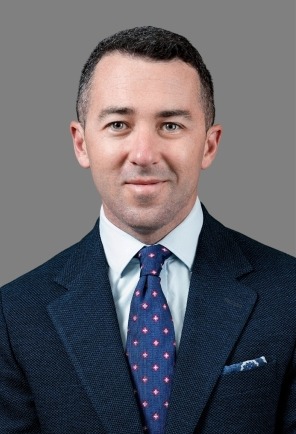Strict Criteria for Domestic Exemption of EIFEL Rules' Excluded Entity Exception
Background
A recent technical interpretation published by the Canada Revenue Agency (CRA),[1] highlights the difficulty taxpayers may face when attempting to rely on the so called “domestic exemption” from the excessive interest and financing expenses limitation (EIFEL) rules in paragraph (c) of the “excluded entity” definition in subsection 18.2(1) of the Income Tax Act (Canada) (ITA). The EIFEL rules generally limit the amount of interest and financing expenses a corporation or trust may deduct in computing taxable income and, in some cases, may cause an income inclusion to partnership members in respect of amounts deducted by a partnership. This CRA position is noteworthy as it confirms the difficulty larger taxpayers may face relying on the domestic exception.
The CRA Position at Issue
The CRA’s position demonstrates that even seemingly innocuous, noncommercial activities carried on outside of Canada by a trust or corporation (in this case a family trust owning a personal use cottage in the US) can disqualify all “eligible group entities” in respect of the corporation or trust from relying on this exception. The domestic exception requires a taxpayer to consider whether all or substantially all of its businesses, undertakings, and activities as well as those of each of its eligible group entities are carried on in Canada. In the view of the CRA, the phrase “undertakings and activities” in the definition of “excluded entity” should be interpreted broadly to include activities such as owning and using a cottage.
In the technical interpretation, the CRA considered whether a Canadian-resident discretionary trust (the Trust) holding solely US property would qualify for the domestic exception to the EIFEL rules under paragraph (c) of the definition of "excluded entity". The key issue was whether all or substantially all of the undertakings and activities of the Trust were carried on in Canada in a particular year. The Trust was affiliated with, and thus an “eligible group entity” of, a group of Canadian corporations (Cancos) because the sole trustee of the Trust was the spouse of the controlling shareholder of the Cancos. The Trust owned only a US cottage and a US bank account used to maintain that property. The CRA concluded that the Trust did not meet the “… all or substantially all of the undertakings and activities carried on in Canada” requirement, since significant activities related to the holding and operation of the cottage occurred outside Canada (notwithstanding that the trustee made substantially all decisions regarding the cottage while in Canada). Consequently, the affiliated Cancos (as they were “eligible group entities” in respect of the Trust) also failed to qualify as excluded entities under this EIFEL exception.
A&M Thoughts
If one accepts the CRA’s broad interpretation of the phrase “undertakings and activities” in the definition of “excluded entity,” before relying on this exception to the EIFEL rules, care should be taken to ensure all eligible group entities in respect of a taxpayer are identified and their holdings considered, even if, at first blush, they appear to have little relation to the taxpayer’s business. This can be a difficult exercise given the breadth of the “excluded entity” definition itself, which includes related and (certain) affiliated entities as well as entities that are or have an interest in a discretionary (or non-fixed interest) trust. Additionally, subsection 18.2(15) contains a rule that deems corporations and trusts that would not otherwise be eligible group entities in respect of one another to be deemed eligible group entities if each is a common eligible group entity in respect of a third corporation or trust.
In the CRA’s view, “undertakings and activities” within the meaning of the excluded entity definition included the mere “holding” and “operation” of personal use real estate by the Trust. While the phrase “undertakings and activities” might, in its ordinary sense, be broad enough to encompass the ownership of personal use property, it is difficult to reconcile CRA’s view with the overall purpose of the EIFEL regime which is to reduce base erosion and profit-shifting by limiting the amount of interest expenses that enterprises at higher risk of engaging in base erosion and profit shifting take on in high tax jurisdictions. The base erosion risk profile of the Cancos would not have changed as a result of the controlling shareholder’s spouse holding personal use, foreign real estate through a discretionary trust. Moreover, the phrase “undertakings and activities” in subparagraph 18.2(1)(c)(i) follows the conjunctive requirement that “all or substantially all of the business” of eligible group entities also be carried on in Canada—it would follow that the phrase “undertakings and activities” when used in proximity to “business” should indicate that the former have some income-generating or profit motivation. This is particularly so if the totality of that subparagraph was simply meant to catch profit-motivated, foreign operations that had the requisite level of activity to be businesses as well as foreign operations that fell below the threshold of being a “business” (i.e., because of insufficient time and attention to be a business).
The CRA’s view also highlights the manner in which CRA could determine “where” an “undertaking or activity” is situated, which would include ascertaining the location of the (i) operation and use of the property, (ii) its maintenance and upkeep, and (iii) its management, administration, and financial management. While this guidance is welcome, it does little to foreshadow how the CRA will weigh the factors when deciding if the “all or substantially all” threshold has been breached—in this case Canadian-situs management and administration was not enough to cause the holding of the cottage to be Canadian enough. (We note, CRA has provided prior views on this subject in CRA Document No. 2024-1038161C6, “EIFEL and the Excluded Entity Exception” (December 3, 2024).)
In the privately held business context, this CRA position may create issues for commonly used family trust structures and, as noted above, care should be taken to consider how widely the eligible group entity definition reaches owing to the application of subsection 18.2(15). More broadly, the position indicates that merely “holding” foreign situs assets by a corporation or trust may be enough, in CRA’s view, to cause the entity, and thus all eligible entities in respect of it, to lose excluded entity status, notwithstanding that such assets are actively managed from Canada (for example: leasing property, leaseholds, bank accounts, intellectual property).
How Can A&M Help?
A&M can help navigate the constantly evolving and developing EIFEL rules by:
- Reviewing the availability of an exception to the EIFEL rules in your particular circumstances
- Reviewing financing and interest expense structures to determine how EIFEL rules may impact your tax position
- Modelling scenarios to quantify limitations under the EIFEL rules, avoid unexpected tax liabilities, and suggest practical solutions to diminish the impact of EIFEL rules on your business
- Assisting with any required filings
[1] CRA Document No. 2025-1056861E5, “EIFEL - Excluded Entity Exception” (June 30, 2025).






